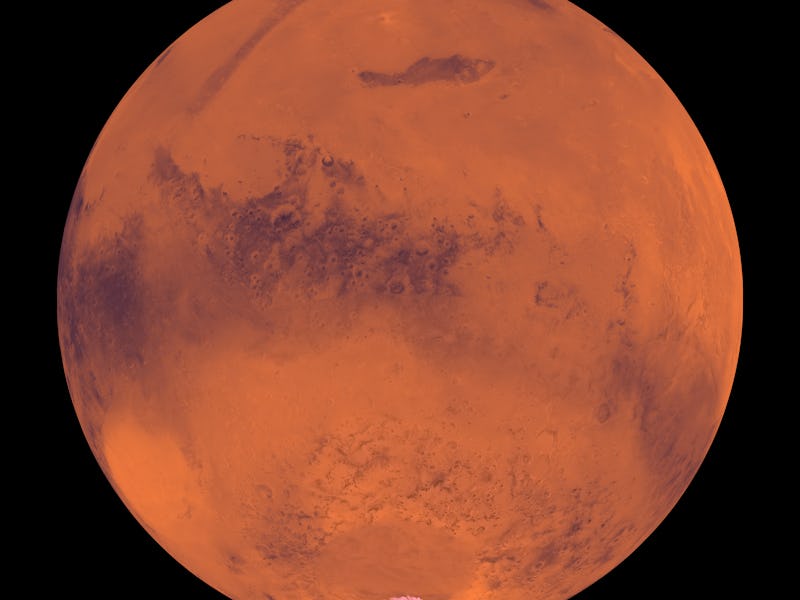China’s Mars rover finds new evidence of an ancient waterway on the Red Planet
Zhurong’s radar observations found two fascinating rock layers under the Martian topsoil.

China landed its first rover on the surface of Mars, called Zhurong, on May 15, 2021. Just ten days later, it began a series of observations that ancient flows of water on the Red Planet could explain.
A new study published Monday in the journal Nature details how Zhurong collected data on Mars’ subterranean sediments with an instrument called the Rover Penetrating Radar (RoPeR). Chinese scientists looked at the radar results Zhurong obtained as it traveled across more than 1,100 meters of flat landscape in a place called Utopia Planitia from May 25 to September 6, 2021. That’s about 102 Mars days, or sols. In the new work, Chinese researchers announced that Mars’ subsurface sediments were organized in a way that could be explained by ancient water flow on Mars.
Why it matters — Water is a tantalizing find. On Earth, it’s a key ingredient for life. But making claims about ancient life on Mars would be so revolutionary that scientists speak cautiously whenever evidence for ancient rivers and organic material appears. It’s at least a positive sign that several robotic visitors, now including Zhurong, have found what could be evidence of hospitable conditions for life on ancient Mars.
Conditions over time on Mars revealed by Zhurong.
What they found — Below the top ten meters of Martian dirt, also known as regolith, rocks and pebbles are stacked in an interesting way. Zhurong’s radar observations found that there are two fascinating layers under the regolith. The material takes a shape known as a fining-upwards sequence, where each section is populated by small bits at the top and bigger rocks at the bottom.
Their work builds upon the knowledge of Utopia Planitia. The first mission to explore this place from the ground was NASA’s Viking 2 mission, which landed there in September 1976. That mission didn’t find signs of life, but did detect elements there that are essential to life on Earth, like carbon, nitrogen, hydrogen, oxygen, and phosphorus.
What it means — Water could explain the fining-upwards sequences. Although, it’s not a clear connection. The authors acknowledge in the study that “no direct evidence for the existence of liquid water was found within the radar detection depth range.”
But it’s certainly possible that water once flowed through Utopia Planitia. They theorize that water flooded the region, maybe as early as the Hesperian Period, which ranges from 3.7 to 2.9 billion years ago. The water caused the heavier rocks to settle at the bottom, and smaller particles to shuffle to the top. This would explain the presence of the deeper of the two fining-upwards sequences.
The higher sequence might be explained by a later event. During the Amazonian period that spans from 2.9 billion years ago to the present day, the region may have experienced a transient flood. The scientists also acknowledged the possibility that impact events or long-term weathering created this sequence of rocks.
What’s next — There’s little doubt that Mars will continue to be a favored site of exploration. Soon, the European Space Agency (ESA) is expected to finalize designs for its portion of the Mars Sample Return collaboration with NASA. If the agencies manage to successfully bring pieces of Martian rocks to Earth for in-depth analysis, humanity might finally know if life once existed on the planet next door.